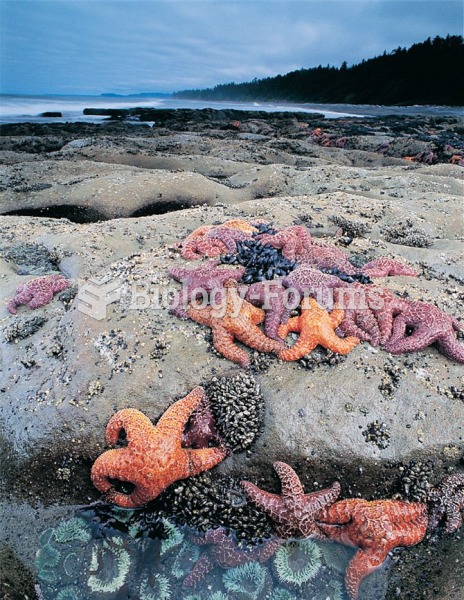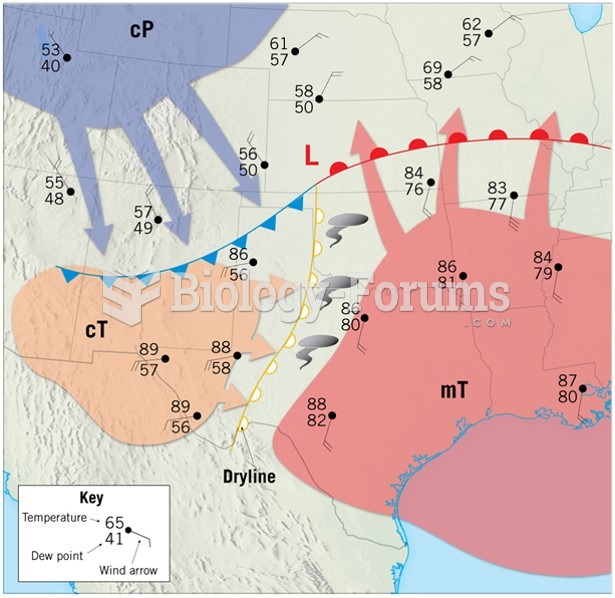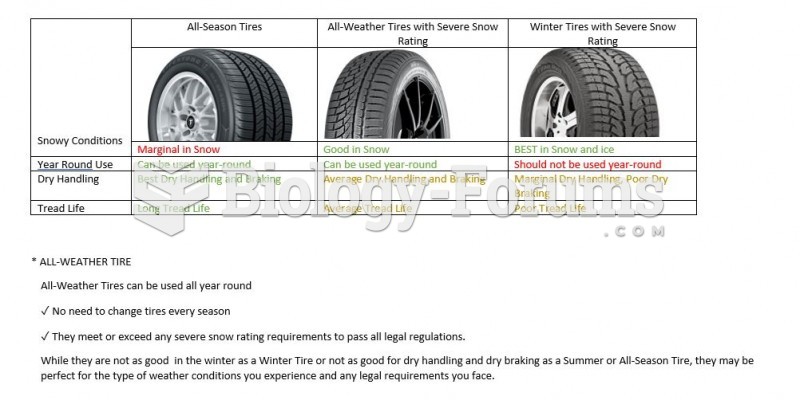Answer to Question 1
ANSWER: The uneven heating rates of land and water cause mesoscale coastal winds. During the day, the land heats more quickly than the adjacent water, and the intensive heating of the air above produces a shallow thermal low. The air over the water remains cooler than the air over the land; hence, a shallow thermal high exists above the water. The overall effect of this pressure distribution is a sea breeze, or in this case a lake breeze, that blows at the surface from the lake toward the land. Since the strongest gradients of temperature and pressure occur near the land-water boundary, the strongest winds typically occur right near the beach and diminish inland. Further, since the greatest contrast in temperature between land and water usually occurs in the afternoon, lake breezes are strongest at this time. At night, the land cools more quickly than the water. The air above the land becomes cooler than the air over the water, producing a distribution of pressure. With higher surface pressure now over the land, the surface wind reverses itself and becomes a land breezea surface breeze that flows from the land toward the water. Temperature contrasts between land and water are generally much smaller at night; hence, land breezes are usually weaker than their daytime counterpart, the lake breeze. In regions where greater nighttime temperature contrasts exist, stronger land breezes occur over the water, off the coast. They are not usually noticed much on shore, but are frequently observed by ships in coastal waters.
Answer to Question 2
ANSWER: Students answers may vary, but the sketch needs to illustrate that eddies that form downwind from obstacles can produce a variety of interesting effects. Wind moving over a mountain range in a stable atmosphere with a speed greater than 40 knots usually produces waves and eddies. We can see that eddies form both close to the mountain and beneath each wave crest. These are called roll eddies, or rotors, and have violent vertical motions that produce extreme turbulence and hazardous flying conditions. Strong winds blowing over a mountain in stable air sometimes provide a mountain wave eddy on the downwind side, with a reverse flow near the ground.
Answer to Question 3
ANSWER: If eddies form in clear air, this form of turbulence is called clear air turbulence (or CAT). When flying in an aircraft through such turbulence, the bumpiness may range from small vibrations to violent up and down motions that force passengers against their seats and toss objects throughout the cabin.







